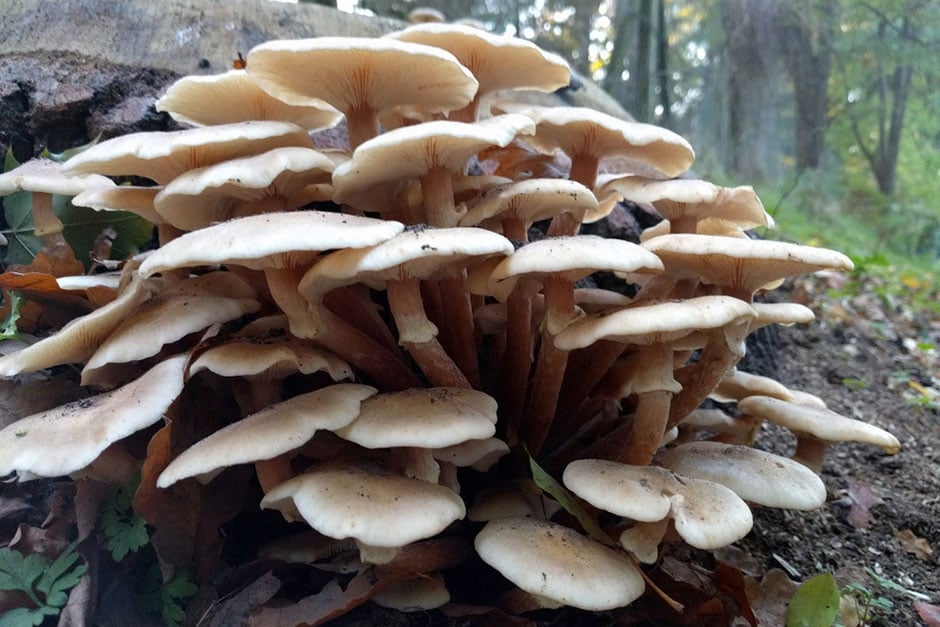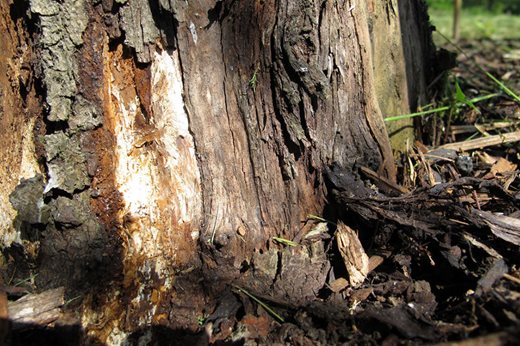Horticultural Advisor, Rebekah Mealey, explains what to do if you find honey fungus (Armillaria)
Breaking the news to a gardener that their plants have honey fungus is the worst part of my job but, it's not a time for sitting and feeling sad, it's time to defend and protect them from invasion.

Step 1: Break the cycle and deal with the outbreak
There is no point leaving an infected plant in the ground to act as a food source for the honey fungus.
Remove as much of the roots as you can. If the roots intertwine with surrounding plants - on the honey fungus list - remove them as well, as it's likely the roots have been infected and it is only a matter of time before the plant above ground is also infected. In hedges, it is best to remove at least one healthy plant from either side of the infected plant to reduce the chances of the disease spreading through the hedge.
Cultivate the soil and chop up the troublesome bootlaces - the smaller they are the less likely it is that they will live and spread. Ideally, leave this area fallow for a year and keep digging it over from time to time, to keep chopping up any re-growth. This isn’t always ideal and neither does it look pretty so consider covering with some woven ground cover fabric and dress it with pots. It’s not going to be an oil painting I grant you but comfort yourself with the thought of all those starving nasty bootlaces and the added benefit of controlling weeds at the same time.
Step 2: Garden health
Once the active honey fungus has been contained it's time to check the health of the rest of the garden. Healthy plants are less likely to succumb so assess and review the health of all your woody plants, especially the ones on the susceptible list.
 The seasonal weather patterns have been making very challenging growing conditions, especially the dry springs, so get on your hands and knees and check those mulch levels. Mulch helps retain soil moisture and can benefit the whole garden but beware of mulch building up around root collars, where the stem meets the roots, as a build-up can breakdown the bark and weaken it - becoming a likely site of infection.
The seasonal weather patterns have been making very challenging growing conditions, especially the dry springs, so get on your hands and knees and check those mulch levels. Mulch helps retain soil moisture and can benefit the whole garden but beware of mulch building up around root collars, where the stem meets the roots, as a build-up can breakdown the bark and weaken it - becoming a likely site of infection.
Step 3: Revive and replenish
Once you're sure honey fungus isn't present in your garden it's time to replant - ideally with plants on the resistant part of the list - as this will reduce the risk of re-infection.
Be sure to choose plants that are suitable for the aspect and growing conditions of the site. After all, a happy plant is a healthy plant, which is more likely to thrive and flourish, covering over the wounds and growing as before. Managing a honey fungus outbreak can be a lot of heartache - and back pain - but don't give up.
For further tips see our page on managing honey fungus outbreaks

